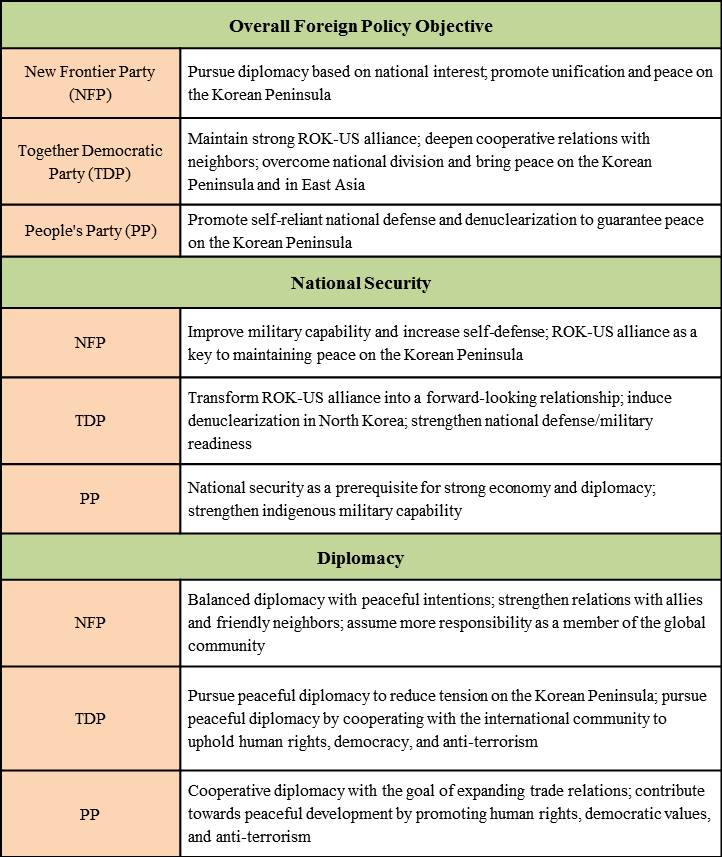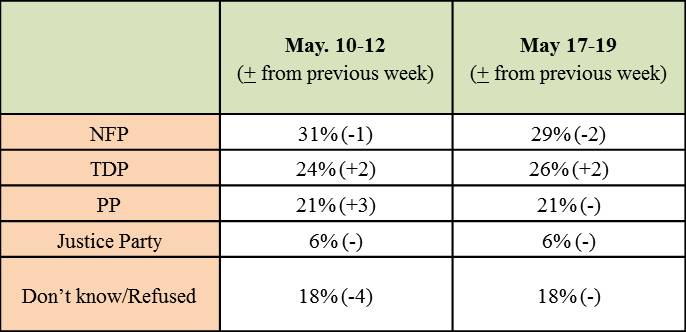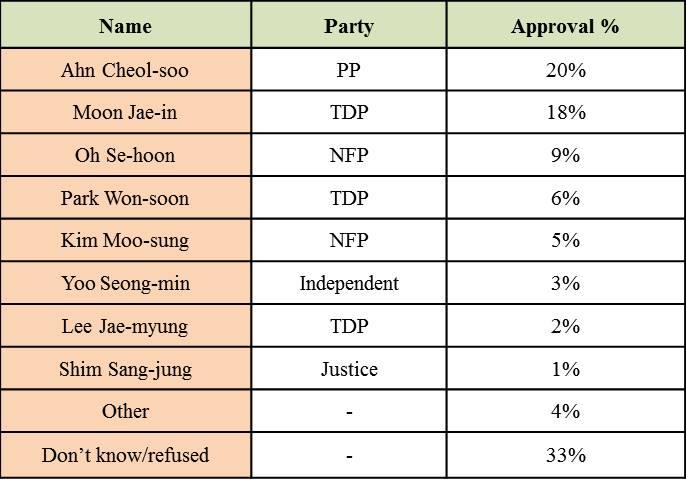The 7th Workers’ Party Congress
The 7th Workers’ Party Congress concluded on May 9. The four-day event was marked by Kim Jong-un’s title being elevated to the Chairman of the Korean Workers’ Party (KWP). His previous title was the First Secretary of the KWP.
Although 120 foreign journalists were invited to Pyongyang for this event, coverage was limited due to constrained access.1 The reporting, albeit hampered, indicates that Kim reaffirmed his policy of byungjin2 and announced North Korea’s five-year economic plan with a special emphasis on addressing North Korea’s electric power shortage problem.3 Eight North Korean officials who also attended the 6th Workers’ Party Congress in October 1980 made appearances: Kim Yong-nam (President of the Presidium of the Supreme People’s Assembly, age 88), Kim Ki-nam (Party Secretary of Publicity and Information, age 87), Park Pong-ju (Premier, age 77), Choi Yong-rim (Former-Premier, age 88), Oh Keuk-ryul (Vice Chairman of National Defense Commission, age 85), Ju Kyu-chang (Former Director of KWP Machine-Building Industry Department, age 88), Yang Hyung-seop (Vice Chairman of the Presidium of Supreme People’s Assembly, age 91), and Tae Jong-su (Chief Secretary of the South Hamgyong KWP Committee, age 80).4 In total, 3,467 members attended the event which was reported to have cost the North Korean government approximately USD $200 million.5
The Standing Committee of the Party’s Politburo now consists of five members: Kim Jong-un, Kim Yong-nam, Hwang Pyong-so, Park Pong-ju, and Choe Ryong-hae, among whom the last two are newly elected.6
In response to the event, the Blue House stated that “if North Korea continues to develop nuclear weapons, it will fail to undergo economic development or improve the lives of its citizens. Rather, it will face stronger sanctions and more isolation.”7
South Korean Approach to Foreign Policy8, 9, 10
With the 7th Party Congress in the backdrop, there is growing interest in the foreign policy positions of three major parties in the National Assembly. On North Korea, for instance, the three parties seem to hold divergent views: the TDP and the PP both favor engagement with North Korea while the NFP supports President Park’s hardline approach.
Meanwhile, floor leaders of the three parties held a meeting to organize the 20th Assembly, which will hold its first session on May 30. They agreed to maintain the 18 standing committees and to elect the speaker and committee chairs by June 7 and 9, respectively. However, they have not yet reached an agreement on the committee chair assignments. Traditionally, the largest party holds the speakership and the opposition leads the judiciary committee. The problem is that the TDP is both the opposition and the largest party. Absent any changes until June 7, the next speaker is likely to come from the TDP.11 The NFP is arguing that it should lead the judiciary committee if the TDP takes the speakership. The PP supports the NFP’s position.12
Restructuring
The government and the Bank of Korea (BoK) have yet to reach an agreement on the financial arrangement involving the restructuring of troubled sectors. The government and the BoK appear to agree, in principle, that the troubled banks (i.e. Export-Import Bank of Korea and Korea Development Bank) must be financed through both direct and indirect means. But while the BoK prefers creating a recapitalization fund which will be backed by government guarantee,15 the government believes that such guarantees will require time until the 20th National Assembly can act. It is unclear, however, exactly when the Assembly can or will act, given the split among the three major parties which hold different positions on this issue. In addition, there appears to be a lack of consensus regarding the BoK’s direct financing option with the BoK officials voicing concern over the risk exposure problem.16
As the government and the BoK work through their differences to find a solution to this problem, some companies are seeking ways to preemptively restructure their businesses. Doosan has been off-loading many of its non-core assets since August 2014 to amass over KRW 3.6 trillion, and announced its latest sale of HRSG to GE Power for KRW 300 billion on May 10.17
The government is also mulling over the need to restructure certain overseas development operations among state-owned companies, such as the Korea National Oil Corporation (KNOC) and Korea Gas Corporation (KOGAS). The Ministry of Trade, Industry and Energy (MOTIE) commissioned a study on this issue and held a public hearing on May 20.
The commissioned report suggests four options: 1) merge KNOC and KOGAS, 2) move the overseas development operation from KNOC to KOGAS, 3) sell KNOC’s overseas development operations to domestic companies, or 4) build a daughter company specialized in operating overseas asset.18 Privatization is considered to be an ideal but unrealistic option due to the lack of experience in the private sector on overseas development.19 The authorities appear to be leaning towards off-loading the overseas development operation to KOGAS.20
President Park in Tehran
President Park visited Iran on May 1-3 as the first South Korean president to do so since the two countries established diplomatic relations in 1962. In addition to adopting a Joint Statement on the Comprehensive Partnership, which reaffirmed South Korea and Iran’s commitment to nuclear non-proliferation and denuclearization, President Park also landed 30 economic cooperation projects worth USD $37.1 billion.21
Although some supporters claimed that President Park’s visit to Iran could be a way to pressure North Korea,22 others expressed caution about the signal this visit may send to other Gulf nations, such as Saudi Arabia. This concern, in part, explains Prime Minister Hwang Kyo-ahn’s visit to Saudi Arabia on May 19.23
Approval Ratings for Potential Presidential Candidates24
Policy on North Korea by Major Party in South Korea
Contributing Staff(in alphabetical order): Han Minjeong, John J. Lee
Editorial Staff:J. James Kim
* Special thanks to Jo Eun A for her comments and feedback.
-
1.
“外信 120명 불러놓곤 200m 접근 금지령… 기자들 ‘농락당했다,’” 조선일보, 2016년 5월 7일.
-
2.
“北 김정은 “북한은 핵보유국···자주권 침해받지 않는 한 먼저 사용 않을 것,” 경향신문, 2016년 5월 8일.
-
3.
“北 김정은, ‘경제발전 5개년전략’ 제시…電力 문제 해결 강조,” 조선일보, 2016년 5월 8일.
-
4.
“36년간 숙청 안 당하고… 살아남은 8人,” 조선일보, 2016년 5월 9일.
-
5.
“당 대표자 3467명 참석”… 노동당원 數 340만명 달할 듯,” 조선일보, 2016년 5월 7일; “북, 7차 당대회 예산 2000억 원 투입,” 중앙일보, 2016년 5월 13일.
-
6.
“[속보]NHK “北 김정은 노동당 위원장 취임”…정치국 상무위원에 김정은, 김영남, 황병서, 박봉주, 최룡해,” 경향신문, 2016년 5월 9일.
-
7.
“`北, 핵·미사일 개발 계속하면 제재·고립뿐`…정부, 김정은 당대회 개회사 평가,” 조선일보, 2016년 5월 7일.
-
8.
NFP, http://www.saenuriparty.kr/web/intro/web/listDoctrineView.do
- 9.
-
10.
PP, http://people21.kr/wp-content/uploads/2016/03/Basic-Policies.pdf
-
11.
“국회 원 구성 협상의 정치학,” 한겨레, 2016년 5월 15일.
-
12.
“18개 유지·원 구성 시한 준수,” 경향신문, 2016년 5월 19일.
-
13.
Date: May 10-12; sample size: 1,005; margin of error: +3.1% at the 95% confidence level.
-
14.
Date: May 17-19; sample size: 1,004; margin of error: +3.1% at the 95% confidence level.
-
15.
“국책은행 자본확충 가닥 잡았으나 속도감이 없다,” 한국일보, 2016년 5월 20일.
-
16.
“정부, 보유 공기업 주식 현물출자…韓銀은 자본확충펀드 간접 출자,” 동아일보, 2016년 5월 20일.
-
17.
“미리 군살 뺀 두산… ‘저성장 넘자’ 자신감,” 동아일보, 2016년 5월 19일.
-
18.
“수조원 손실 해외자원개발…대대적 구조조정,” 경향비즈, 2016년 5월 19일.
-
19.
“‘부실 자원개발’ 해법 찾을까,” 한겨레, 2016년 5월 19일.
-
20.
“석유-가스 公 해외자원개발 기능 떼내 통폐합,” 동아일보, 2016년 5월 20일.
-
21.
Press Briefing, Ministry of Foreign Affairs, 2016년 5월 3일.
-
22.
“박 대통령 ‘북, 이란 본보기 삼아 핵개발 중단하고 개방해야,” SBS 뉴스, 2016년 5월 17일; “박근혜 대통령, 북한이 이란 본보기 삼아 변화와 개혁의 길로 나설 것을 촉구,” 청와대 뉴스, 2016년 5월 17일.
-
23.
“황교안 총리 ‘이란 앙숙’ 사우디 방문,” 한국일보, 2016년 5월 20일.
-
24.
Date: May 10-12; sample size: 1,005; margin of error: +3.1% at the 95% confidence level.

 Facebook
Facebook Twitter
Twitter


